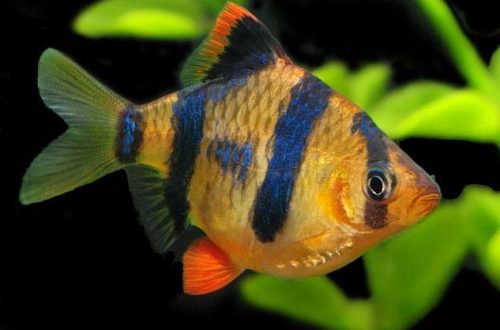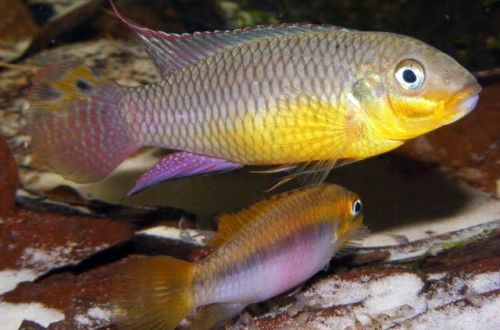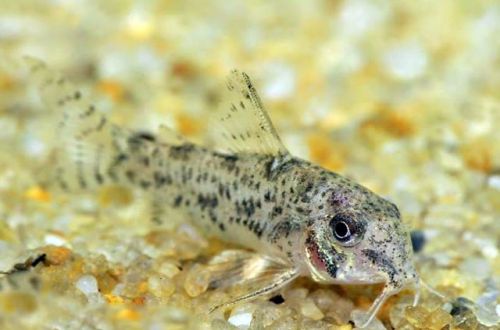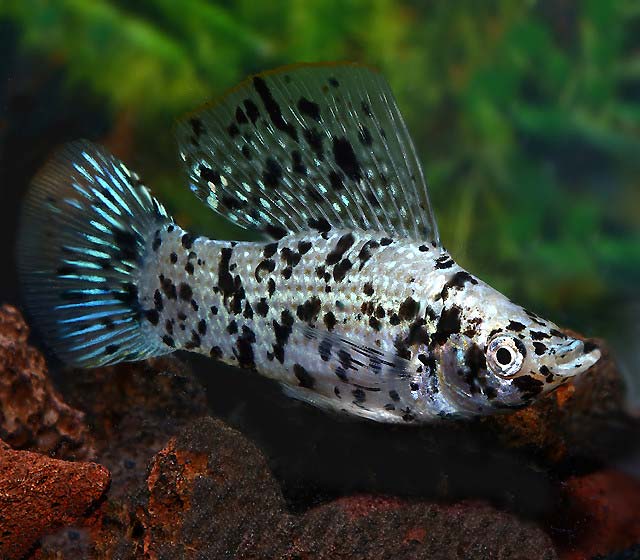
Mollinesia Dalmatian
Mollies Dalmatian, abbreviated as Molly Dalmatian, English trade name Molly Dalmatian. It is an artificially bred color variation, not found in nature. The exact origin is unknown. Presumably, it was first obtained on the basis of the spotted form of Molliesia latipin. The fish has a unique body pattern – black specks and dots on a white background, which resembles the colors of the Dalmatian dog breed.

Later, in the course of further selection, similar colors appeared in other varieties of closely related species and their hybrids. Thus, the name has become collective and applies equally to all Mollies that have a similar body pattern.
Brief information:
- The volume of the aquarium is from 100–150 liters.
- Temperature – 21-26°C
- Value pH — 7.0–8.5
- Water hardness – medium and high hardness (15-35 dGH)
- Substrate type – any
- Lighting – any
- Brackish water – acceptable in a concentration of 10-15 gr. salt per liter of water
- Water movement is weak
- The size of the fish is 12–18 cm.
- Nutrition – any feed with herbal supplements
- Temperament – peaceful
- Content alone, in pairs or in a group
Maintenance and care
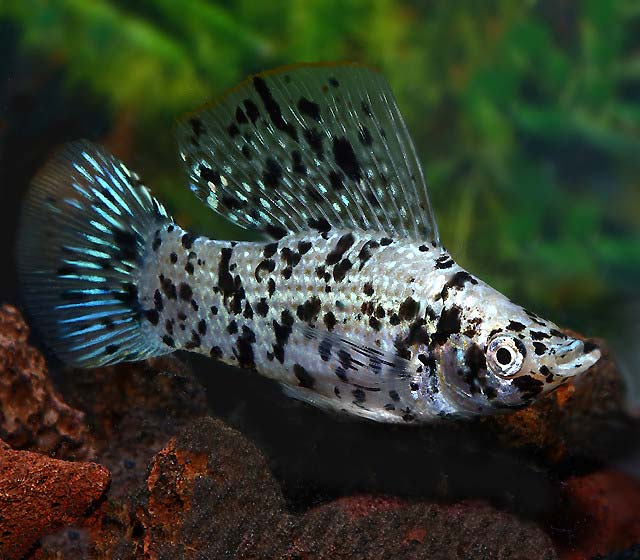
The minimum volume of an aquarium for a group of 2-3 fish starts from 100-150 liters. In the design, it is recommended to use a large number of aquatic plants, but not allowing them to overgrow, preventing free swimming.
Plants will not only serve as a place to hide from the attention of alpha males and other active fish, but also as a source of food. Mollies need a diet rich in vegetable matter. For the same reason, you should not place too expensive ornamental varieties in the aquarium, which are likely to be damaged.
The wild ancestors of these fish live in alkaline environments with high total hardness, including in sea water in river estuaries and among mangroves. However, artificially bred fish are not so demanding and thrive even in mild, slightly acidic conditions.
Mollies Dalmatian, like its other relatives, is sensitive to nitrates, the content of which should not exceed 20 mg / l. This requires regular replacement of part of the water with fresh water and ensuring the smooth operation of the filtration system. Vigorous plant growth and moderate feeding also help reduce nitrate levels.
Food
They accept most popular feeds in dry, frozen and live form. The basis of a daily diet can be flakes or granules that contain herbal supplements.
Behavior and Compatibility
Dominant males are very energetic and sometimes very active in chasing females, so in small aquariums it is desirable to maintain a harem-type group composition – one male and several females. In large tanks and with enough hiding places, there is no limit on the number of males.
Peacefully tuned in relation to other species. Compatible with calm, non-aggressive fish of comparable size. Other viviparous fish will become good neighbors.



